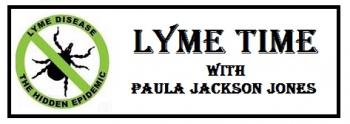Tick bites and rashes
“But I never saw a tick” and “I never got a bulls-eye rash” are two very common comments I get when I talk to people who tested positive for a tick-borne disease.
So why is that?
The most simple and straight forward answer would be that most tick-borne diseases are transmitted by ticks in the nymph stage, which are no larger than a poppy seed and not all tick-borne diseases produce the bulls-eye rash, in fact most do not.
My 2009 tick back looked like someone took a paintbrush and painted the side of my torso. Nothing even remotely close to a bulls-eye!
The Maine CDC reports that over 50 percent of all ticks in Maine carry a tick-borne disease. Should you find and remove a tick from your body, you cannot tell simply by looking at that tick what it is carrying. You can identify the species but there are no indicators what, if anything, it is carrying.
Research has shown us that there are many different kinds of diseases and various strains of those diseases and many of the symptoms of those diseases have been identified. But what happens when you’re bit by a tick carrying more than one tick-borne disease? How does that affect the testing and furthermore, how does it affect your symptoms?
This is where we need to start thinking about this as a tick-borne disease and move away from thinking constantly about Lyme disease. Getting a tick bite and going to your doctor to be tested for Lyme disease, you could easily miss the mark of picking up another tick-borne disease because the basic Lyme test conducted in most PCP offices, the ELISA test, is only looking for one strain of Lyme disease and is, at best, 65 percent accurate if tested at the right time. If you test too soon or too late, you can get a false negative. Maine Law LD597 states that Lyme disease can be difficult to diagnose, that a negative test doesn’t mean that you don’t have it and encourages re-testing in a couple of weeks.
Just recently, the federal CDC released a statement about the faultiness of the current testing and is working on a test that is like DNA testing that (hopefully) will have a wider range of detection with a much stronger sensitivity and a more accurate result.
So, with unreliable testing and the unknown of what a tick that bit you could be carrying, how does one have peace of mind when living in an endemic region?
Simple — don’t wait to be bit! Have prevention practices in place to use on a regular basis. Make it part of your daily routine. Whatever repellent you prefer for your skin, use it! Make sure that your clothing is treated with permethrin and for those who are concerned about the environment, by products and clothing already pre-treated with permethrin that are safe and effective. Treat where you work and play. Contact a licensed provider or there are do-it-yourself products. And don’t forget your pets who are more than capable of carrying those ticks in from the outside. And if you find a tick, test — don’t flush! Send it off to be tested and find out what you’ve been exposed to.
With many tick-borne diseases producing common symptoms such headaches, joint pain, stiff neck, fever, generalize fatigue and not all of them producing the classic bulls-eye rash — we need to change how we think about tick-borne diseases and when we have been bitten, in order to get a proper diagnosis and receive the right treatment, know what to test for!
Paula Jackson Jones is president of Midcoast Lyme Disease Support & Education, a 501 (c)(3) nonprofit and Maine-partner of the National Lyme Disease Assoc and member of Maine CDC Vector-borne Workgroup. You can reach her at paula@mldse.org or visit their website www.mldse.org





























